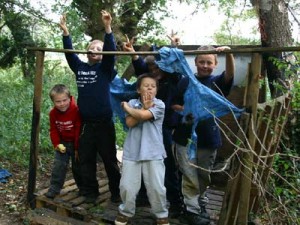Democratic Education in Public Schools: The Hope for a Hybrid
As you know, my heart is in democratic education (though I’d like to come up with a more inclusive term). After working closely with public schools for the last five years, the question for me has become, “How do we incorporate the values and practices of democratic schools into public schools?” Here are some of the reasons it’s much more of a challenge — though definitely not impossible:
- Large classes. It’s nearly impossible for a teacher to customize the approach to the student when there are 20-30 kids in the class. I found it challenging to do so with 12 kids at a time at Spark. I often had to put the needs of the group over the needs of the individual.
- Standardized curriculum and testing. The state and federal government requirements have become outrageously demanding under No Child Left Behind (I can’t even say those ironic words without wanting to vomit). In order for public schools to keep their doors open, they must continue to raise their test scores so that every child is deemed “proficient” in math and reading by 2014. Oh, the insanity. Future posts on this topic to come.
- Lack of exposure. Most people haven’t heard about democratic education — I hadn’t myself until I’d almost graduated from college, even though I majored in Psychology. Information about successful alternatives in education and answers to frequently asked questions still haven’t hit the mainstream.
- Lack of practical methods for incorporating student-centered learning into public schools. The reality is that most schools simply aren’t able to adopt a purely democratic model and may not know how to customize the approach and still meet their requirements. They need models for practices such as student-led parent conferences and after-school programs that give kids choice and voice in what they learn.
I want to assure teachers — especially at my own schools — that I understand the challenges they face, because I’ve worked in public education myself. This year, I hope to research programs and schools that have successfully applied democratic principles in traditional settings, and share what they’ve been able to do within their circumstances.
August 21, 2008 Educational Philosophy & Practice 7 Read more >
